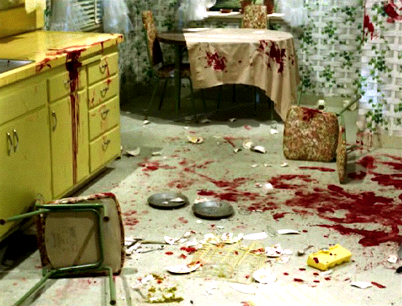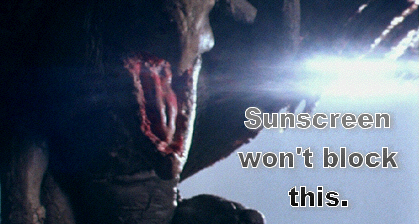Director: Ishiro Honda
Writers: Reuben Bercovitch, Ishiro Honda, Takeshi Kimura
Producers: Tomoyuki Tanaka, Kenichiro Tsunoda, Henry G. Saperstein
Cast: Russ Tamblyn, Kumi Mizuno, Kenji Sahara, Haruo Nakajima, Yu Sekida, Nobuo Nakamura, Kipp Hamilton, Jun Tazaki, Hisaya Ito, Ren Yamamoto, Hisaya Ito, Yoshifumi Tajima
Biologist Dr. Paul Stewart (Russ Tamblyn) is a specialist in giant animals. He has been called in to investigate reports of attacks by a giant, green, humanoid creature rising from the seas around Japan. It is suspected that this man-eating monster is a gargantua, the name given to the species when Stewart’s team had discovered and studied one infant creature years earlier until it escaped. Since the little, brown creature was always gentle and lived in the mountains, Dr. Stewart surmises that this deadly, sea-dwelling, green giant must be a full-grown, mutant offshoot. If the ferocious giant grew from cells of the gentle gargantua, destroying it with military firepower would scatter cells that could grow into more monsters.
The Flashback Fanatic movie review
There is probably no better example of the helpless horror that the kaiju film realizes than the opening scene in The War of the Gargantuas. During a thunderstorm at sea, a giant octopus attacks a ship only to be attacked by a second sea monster, the green gargantua. It’s a real grabber and is elaborated on in a flashback when we see the sailors swimming for their lives only to become monster munchies.
My favorite bit of mean monster etiquette is when the evil, green gargantua gobbles up his human hors d’oeuvres; after chewing up his victims, he spits out their clothes. It’s a fine, grisly touch that makes this monster’s behavior even more personally vindictive than just leveling buildings that a lot of those tasty humans might be occupying.
Aside from the original Godzilla (1954) that initiated the Japanese kaiju films, The War of the Gargantuas is my favorite of the genre. Its appeal for me is mostly due to the humanoid appearance of the giant monsters that allows them more agility and expression. It also still operates as a horror film rather than just a monster rally and sci-fi fantasy aimed at the kiddies. Sure, kids will love it, as I did and still do (I’ll never grow up), but I appreciate its directness focusing on just one type of monster that we find out has a brother. Since one brother’s brotherly love won’t excuse snacking on human beings, we also get the monster fight action that delights kaiju film fans.
The War of the Gargantuas is another one of those wild flicks that went through a twisted process of reinvention. It originated as a sequel to Frankenstein vs. Baragon (1965), aka Frankenstein Conquers the World. The two giant monster brothers were supposed to be grown from cells of the Frankenstein monster seen in the previous film. The good, brown-haired giant was called Sanda (Yu Sekida) and the evil, green-haired giant was called Gaira (Haruo Nakajima). The new monsters were not referred to as gargantuas until the American English dub for this film was done, which eliminates any reference to Frankenstein. The gargantua concept was probably more easily understood by American audiences who had not seen the earlier film. The Japanese take on Frankenstein was already outrageous enough. To somehow link two new and very different monsters to the Frankenstein monster of the previous film would be perplexing.
The US alteration of the monsters’ origins makes them seem like enormous versions of the legendary Tibetan creature the Yeti, aka the Abominable Snowman. This furry, mountain-dwelling anthropoid had an American cousin called Bigfoot that was generating more media attention in the late ’60s around the time that the US version of The War of the Gargantuas was being modified.
According to both director Ishiro Honda and US co-producer Henry G. Saperstein, their American star Russ Tamblyn was difficult, to say the least. Tamblyn ignored Honda’s direction and hated his lines, so he made up his own. Somehow, Tamblyn’s original voice tracks were lost. Then when it came time to dub his dialogue for the US English version, Tamblyn could not remember his original lines. Tamblyn had to recreate his dialogue from watching his filmed lip movements. I would have to say that he did a very fine job, as his words always seem perfectly in synch with his image. However, having to dub his lines in such difficult circumstances may be an additional factor contributing to the rather blasé air of his performance.
As a result, we have a scientist hero in a sci-fi flick that often seems aloof and testy. There is even one scene aboard a bullet train to Tokyo when Tamblyn’s Dr. Stewart is squinting, pale, and sweaty; too much saki the night before? I’ve never been on a bullet train, but I know the feeling.
Dr. Stewart also has an unusually cynical attitude that is kind of refreshing. When referring to the comparison of the green and brown gargantuas with the biblical brothers Cain and Abel, Dr. Stewart says, “Brother against brother, huh? Sounds like some countries I know. Well, maybe this time the nonviolent one will win, huh? Ha. Ha.” What other scientist hero of ’50s and ’60s sci-fi flicks would make such a sour comment?
Tamblyn’s performance may have been tapping into the attitudes of the 1960s disaffected youth. Some of his offhand quips actually play better due to his dour manner. In many scenes Tamblyn’s Dr. Paul Stewart acts like he is a paid-by-the-hour laborer that can’t wait to go home instead of the dedicated genius we expect to save the day. I get a kick out of all of the news reporters clamoring for insight from the esteemed scientist who acts like he doesn’t give a damn.
Only Stewart’s assistant, the beautiful Dr. Akemi Togawa (Kumi Mizuno), seems able to mellow out the apathetic scientist. He manages to be a bit more relaxed and likable around her. They seem comfortable together, yet there is never any real indication of a romance between them, which is another deviation from the norm in sci-fi horror films of this period.














































